During the 2020-2021 academic year, I held a NINO Student Research Assistantship, supervised by Dr Ian R Simpson of the Faculty of Archaeology, Leiden University. The main aims of this Student Research Assistantship were to contribute to the ceramic type-series and to digitise the ceramic data from the excavations at Jarash, Jordan (2008-2014). Specifically, my assistantship focused on the Byzantine/Early Islamic ceramics excavated from the congregational mosque and adjacent market spaces at the site. Studying these, we created a detailed archive of its transitional Byzantine/Early Islamic ceramic corpus and answered several questions relating to the site-specific market economy.
My student research assistantship consisted of three large practical tasks: (1) digitising the ceramic drawings; (2) data entry; and (3) producing photomicrographs of the pottery clippings using a stereomicroscope. Whilst Jarash had been excavated for many decades, the discovery of the mosque and the recognition of the post-Byzantine archaeological material was relatively recent. The NINO student research assistantship was thus crucial for advancing the post-excavation stages of the research into the Byzantine/Early Islamic archaeology at Jarash.
In total, 245 pottery finds were entered into the database and 167 pottery drawings were digitized using Adobe Illustrator. This resulted in making the ceramic dataset digitally available and operable, archivable and publication-ready. Additionally, almost two hundred ceramic clippings were photographed using a Leica stereomicroscope in the lab of Material Studies at Leiden University. The many photomicrographs of the pottery clippings produced by the stereomicroscope were processed and analysed in relation to the already-established Jarash cera mic type-series. Furthermore, generating and analysing these photomicrographs helped us to establish the preliminary mineralogical composition of the clay, to capture the microstructures of clay pastes, and to record their surface microtopography. In the future, the macroscopic determination of inclusions undertaken during my assistantship can be compared to the petrographic analysis of the ceramic thin sections produced from the same pottery clippings, thereby investigating the feasibility of this method for studying ceramic inclusions.
mic type-series. Furthermore, generating and analysing these photomicrographs helped us to establish the preliminary mineralogical composition of the clay, to capture the microstructures of clay pastes, and to record their surface microtopography. In the future, the macroscopic determination of inclusions undertaken during my assistantship can be compared to the petrographic analysis of the ceramic thin sections produced from the same pottery clippings, thereby investigating the feasibility of this method for studying ceramic inclusions.
My assistantship started only a month before the global pandemic came about, and like many others, my supervisor and I too had to adjust our aims and goals to the new research realities. In the end, this worked out well and the assistantship resulted in the envisaged outcomes that help us to better understand the pottery from Byzantine/Early Islamic Jarash.
 For all I have learned and achieved during my assistantship, I am greatly indebted to the NINO, my supervisor, and all the other people from the Faculty of Archaeology, and beyond, who helped and assisted me along the way and made my assistantship a fruitful and fulfilling experience. In my role as a NINO Student Research Assistant, I have gained invaluable and enriching experience in hands-on scholarly research. It is the NINO and Dr Simpson that I would like to thank once again for giving me the opportunity to learn and develop new skills through this research-driven assistantship.
For all I have learned and achieved during my assistantship, I am greatly indebted to the NINO, my supervisor, and all the other people from the Faculty of Archaeology, and beyond, who helped and assisted me along the way and made my assistantship a fruitful and fulfilling experience. In my role as a NINO Student Research Assistant, I have gained invaluable and enriching experience in hands-on scholarly research. It is the NINO and Dr Simpson that I would like to thank once again for giving me the opportunity to learn and develop new skills through this research-driven assistantship.
